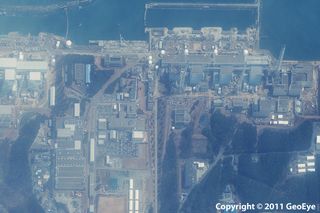Wild Monkeys to Be Released into Fukushima Fallout to Test Radiation

To study the lingering impacts of the nuclear disaster that occurred this past March in Fukushima, Japan, scientists there are designing radiation-detecting collars that they plan to fit onto wild monkeys in the local forests.
According to Takayuki Takahashi, a professor of robotic technology at Fukushima University, the collars will contain a dosimeter, which measures radiation levels, as well as an altimeter to measure height above the ground, and a GPS tracking device. As soon as February, the collars will be fitted on as many as three wild monkeys living in a forest in the Fukushima Prefecture.
Takahashi told CNN that the monkeys will wear their collars for about a month, after which the devices will be detached by the researchers using remote controls, and retrieved.
Analyzing the data collected by the collars will reveal the impact of radioactive material that spewed into the environment back in March, when a magnitude-9.0 earthquake and tsunami knocked out the cooling system at the Fukushima Daicchi power plant, leading to the meltdowns of three of its nuclear reactors. [5 Everyday Things That Are Radioactive]
In April, scientists estimated that the total amount of radioactivity released was approximately one-tenth the amount released during the Chernobyl disaster. In the months since, scientists have continued to monitor radiation levels from the air, but they say using monkeys as "research assistants" will clarify the conditions on the ground.
"We would like to know how much impact (the radiation has) on the natural world, such as forest, river, underground water and ocean," Takahashi told reporters. "We will draw the map to show the movement of radioactivity."
The scientists are adjusting the collar's design after its dosimeter malfunctioned during the first attempt to run the experiment in October, CNN reported. The project was the brainchild of Toshio Mizoguchi, a veterinarian at the Fukushima Wildlife Rehabilitation Center, who wanted to monitor the effects of radiation on the local wildlife.
Sign up for the Live Science daily newsletter now
Get the world’s most fascinating discoveries delivered straight to your inbox.
This story was provided by Life's Little Mysteries, a sister site to LiveScience. Follow us on Twitter @llmysteries, then join us on Facebook.

